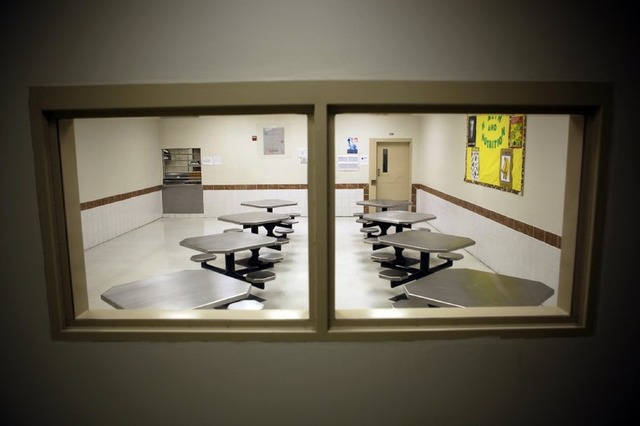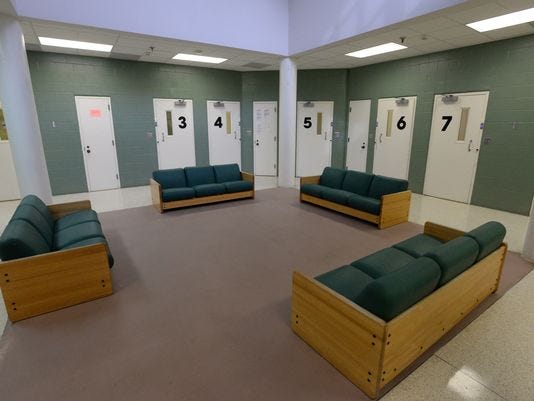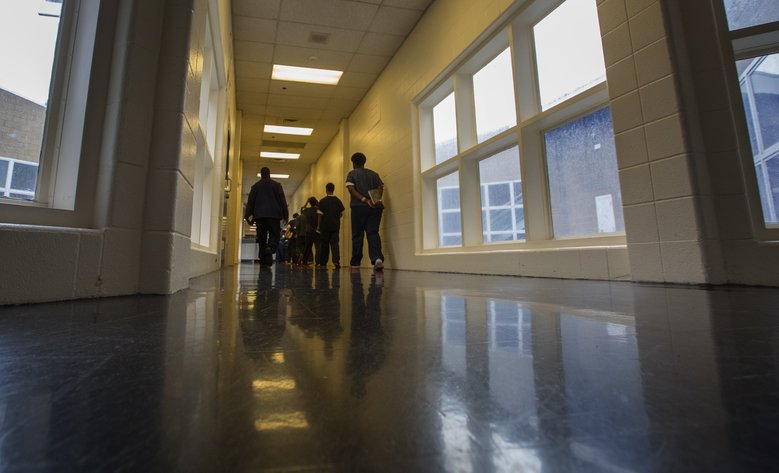Juvenile Detention

Basics
Arrest Process
The law enforcement officer(s) safely and securely transport the individual to the JAC.
- Upon arrival, the officer and arrested youth meet with staff to conduct an intake, screening, and admissions process.
- The minor is asked if he or she is in a state of immediate crisis, has any complaint of pain or injury, or if he or she has a medical condition which needs immediate attention.
- If the juvenile has any injury or complaint of injury, or require crisis stabilization, the arresting officer must seek and ensure that the appropriate level of emergency health care or first aid is provided. Once appropriate clearances are obtained, the youth is admitted to the facility.
Admissions Process
- All youth are searched for weapons and contraband. In addition, all personal property, e.g., jewelry, book bags, pens, pencils, etc., are removed and placed into a safe and secured storage.
- The law enforcement officer provides the arrest information to staff to place into the youth's permanent record.
- Family members are immediately notified by phone about the youth's arrest.
- Youths are fingerprinted, photographed and go through a positive identification process.
- The entire process may take up to six hours depending on the severity of charge, the number of youth in custody, and 24-hour detention hearing court calendar mandates.
- The admission process identifies status, risk to re-offend, substance abuse and mental health and other personal needs and issues. Referrals are made to community based programs that are designed to meet the youth's individual needs based on the outcome of an evidence-based assessment.
- When processing is completed, the youth is released based on the outcome of the risk assessment instrument to their parents, legal guardian, responsible adult, shelter or placed in detention. If the youth meets the criteria for secure detention, they will be transferred to the Miami-Dade Department of Juvenile Justice Detention Center pending a 24-hour detention hearing.
- If the youth is not transferred to secure detention, a notice to appear in court at a later date will be provided at the time of release from the JAC.

Example Day
Youths are released from their rooms at approximately 7:00 a.m. for breakfast which is served in the cafeteria. Youths are released from their individual cells, travel through the electronically secured doors separating the pods from each other and the hallway, and finally pass through the door into the cafeteria/dining room.
After breakfast, youths go back to their rooms until school starts, approximately 8:30 a.m.. School takes place in the school room off of the gymnasium. Again, youths exit their cells, the pod, travel through along the secure hallway, through the electronic door into the gymnasium. Another secure door separates the classroom from the gymnasium.
School starts at approximately 8:30 a.m.. There is a short bathroom break at 9:30 a.m.. Students remain in the classroom then until about 10:30 a.m. when they are lead back to their cells for an in-room break until about 10:45. Lunch is served in the cafeteria about 11:30 a.m.. Youths are then led back to their rooms until school starts up again at 1:00 p.m. until 3:00 p.m. After school youths are led back to their assigned Pods where they are allowed "free-time". During this time youths may use the collect phone and watch movies (rated "G" or "PG").
Dinner is served between 4:15 and 4:30, back in the cafeteria. Youths are also required to clean their cells daily and must take mandatory showers.

The detention center closest to the Everglades is the Collier Juvenile Detention Center, a 40 bed, hardware secure facility that serves youth detained by various circuit court(s). Youth are detained pending adjudication, disposition or placement in commitment facility.
The facility provides supervision of youth in a safe, secure and humane environment. Services for youth include: education, mental health, substance abuse, and health care. Medical and mental health are contracted services. Educational services are funded by the Department of Education through local school districts.
What happens in a typical juvenile detention center depends on the facility. Each center has its own daily schedule, but most follow a similar pattern. At youth detention centers in Georgia, youths begin the day by making their beds and dressing. They eat breakfast and clean their rooms for inspection. Then they begin classes, which total 330 minutes per day and include academic instruction, lunch and physical education.
After school, youths spend time in therapy, such as family focus group, drug and alcohol group, family intervention training and anger management. After dinner, they have supervised leisure activities, such as watching television, arts and crafts and scheduled visitation. The day is extremely structured, with set times for morning release from rooms for breakfast, school, bathroom breaks, lunch, free time, dinner, visiting hours, mandatory showers and bedtime. Each facility sets its own visitation rules, but is likely to provide visiting hours several evening per week. Visits, which are optional, are typically brief - 20 to 30 minutes. Generally only parents and legal guardians are permitted to visit without prior approval from a counselor, but attorneys and other service providers or mental health counselors can visit whenever necessary.